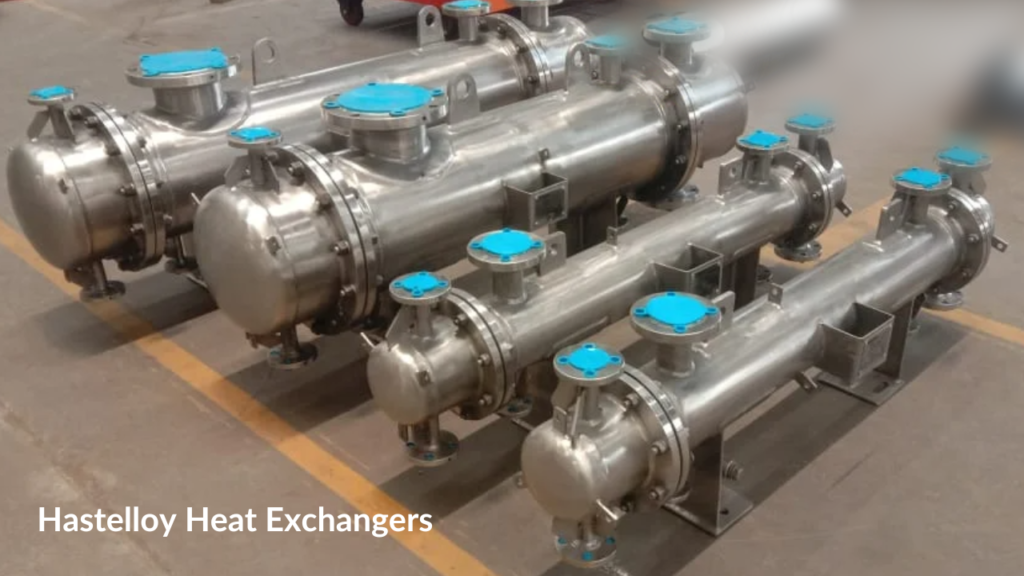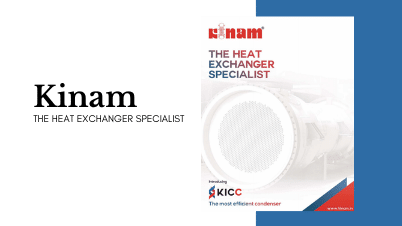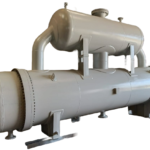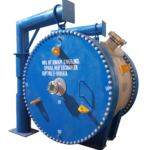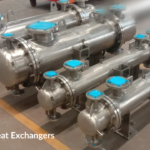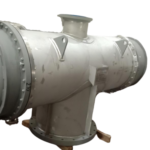Why is Hastelloy required in Chemical and Pharma Heat Exchangers?
Hastelloy C-22, also known by its generic name Alloy C-22, has become one of the most popular choices for MOC in the Chemical and Pharma industry for Heat Exchangers. In this blog, we cover why it is such a preferred material, and what benefits its application can bring to your process.
What Are Hastelloy:
Hastelloy is a nickel-based material known for corrosion resistance. This high-grade alloy is made with a mixture of nickel, chromium, and molybdenum with trace content of other metals. Alloys that belong to this family of alloys are well known for their strength while operating in extremely corrosive surroundings and at high temperatures. They are also rather easy to work with and are easy to manipulate and weld.
Hastelloy is incredibly versatile and due to its properties, has found major applications as a MOC in Aerospace, Chemical, Petrochem, Pharmaceutical, Oil and Gas, and many other industries. ‘C-Type’ Hastelloy are considered the most versatile and are often found in the fabrication industry to make fan-housing columns, condensers, dampers, fan scrubbers, ducts, stack gas re-heaters, and of course…. Heat Exchangers.
Why are they preferred for Heat Exchangers:
As stated earlier, Hastelloy is a nickel-based alloy with multiple variants depending upon the other metals added to it. As such, while different varieties of Hastelloy have their unique benefits, they all possess certain common properties that can be noted from the list below:
- Extended Service Lifecycle
- Low Failure Rate
- High Heat Transfer Efficiency
- Accommodates High Temperature.
- High resistance to corrosion
Corrosion resistance is the main reason why Hastelloy Heat Exchangers have found its audience in the chemical industry and pharmaceuticals, while its reliability has found its acceptance in industries like oil & gas, geothermal, and many others.
We have noted that the use of Hastelloy Heat Exchangers brought our clients the following advantages:
- Wide Operating Temperature Range
- Corrosion Resistance
- Longer Operating Life
- Better handling during Maintenance
- Better Handling of Pressure Fluctuations.
Apart from these, Hastelloy Heat Exchangers also create a much safer working environment. A well-built Hastelloy Heat Exchanger will result in fewer leakages and comes with a significantly lower risk of breakage, especially when compared to Glass Heat Exchangers.
C-276 & C-22:
When it comes to Hastelloy Heat Exchangers, the two most common versions to be used are C-276 and C-22. Both of them come from the aforementioned ‘C-Type’ of Hastelloy. They have the Unified Numbering System (UNS) number UNS N10276 and UNS N06022 respectively. Major differences between them are the result of the different metals used.
The chemical composition (%)difference is as follows:
| Grade | Ni | C | Mo | Cr | Fe | W | Co | Mn | V | Si | Cu |
| C22 | 56 | 0.01 max | 13 | 22 | 3 | 3 | 2.5 max | 0.5 max | 0.35 max | 0.08 max | 0.5 max |
| C276 | 57 | 0.01 max | 16 | 16 | 5 | 4 | 2.5 max | 1 max | 0.35 max | 0.08 max | 0.5 max |
C-22 contains more Chromium and Molybdenum. While both are fantastic for corrosion resistance, the higher content of these metals makes C-22 even more resistant to corrosion, especially in oxidizing media with high levels of chloride ions.
While they both can be used interchangeably for a lot of purposes, for pitting and crevice corrosion, a C-22 Heat Exchanger is the best option. Used primarily for FGD systems alloy C22 is a fixture for pharmaceutical applications. C-276 however can be considered more versatile and has a lower cost, making it suited for a wider range of applications and easier on the budget.
Benefits of Corrugated C-22 Heat Exchangers:
While C-22 Heat Exchangers come with their own set of advantages, these advantages are compounded when we add corrugated tube technology. By using Hastelloy Corrugated tubes like the ones used in KICC Corrugated Tube Heat Exchangers, we can reduce the size of the Heat Exchangers (upto50%).
The reduction in size not only has a direct effect on the footprint of the Heat Exchanger, but it also saves the amount of material required, having a substantial impact on the final cost of the Heat Exchanger. For a process where pricing is an important factor, Corrugated Hastelloy Tube Heat Exchangers are a more economical option, that allows you to select a much more effective Heat Exchanger.



